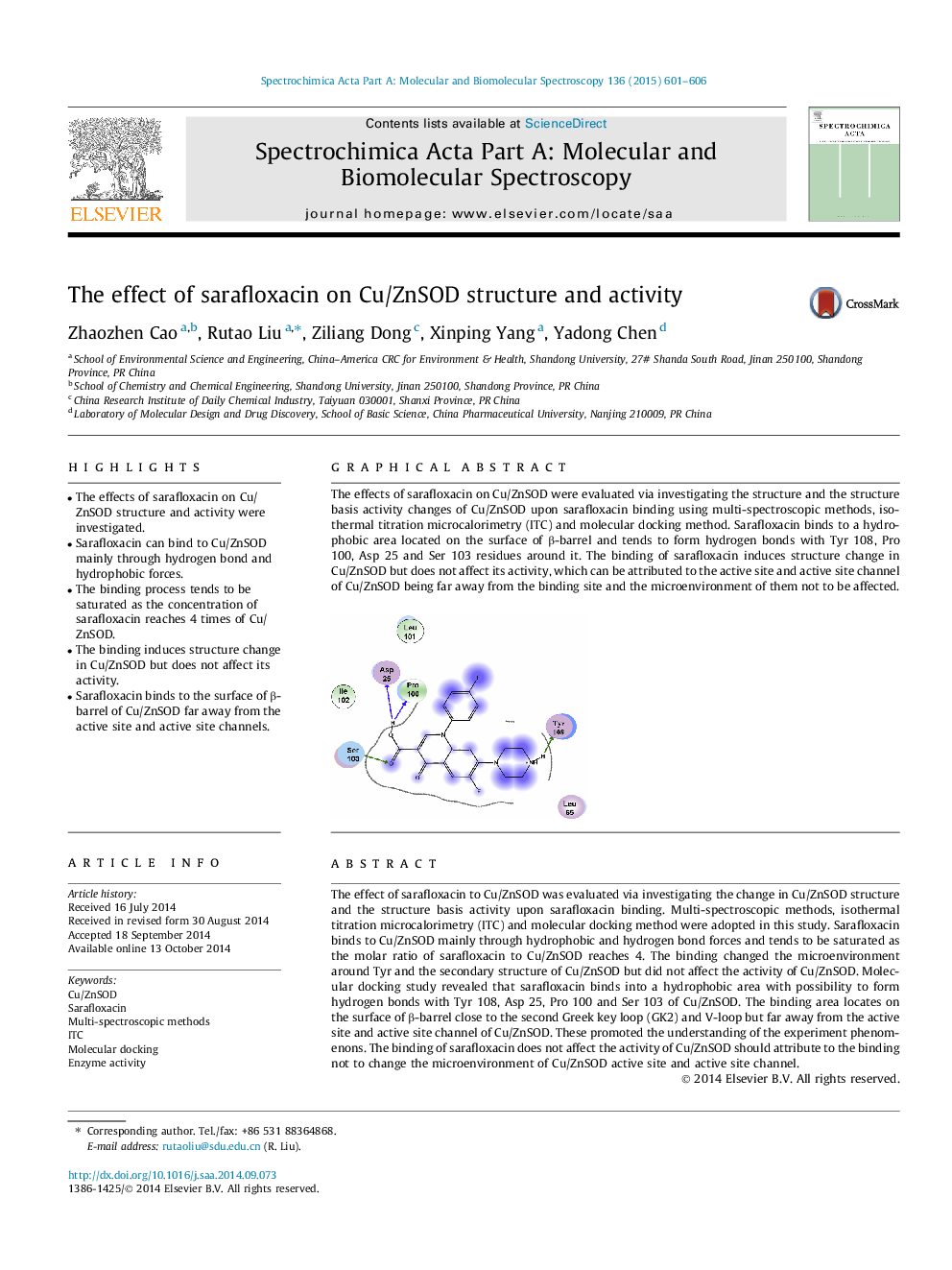| Article ID | Journal | Published Year | Pages | File Type |
|---|---|---|---|---|
| 1229473 | Spectrochimica Acta Part A: Molecular and Biomolecular Spectroscopy | 2015 | 6 Pages |
•The effects of sarafloxacin on Cu/ZnSOD structure and activity were investigated.•Sarafloxacin can bind to Cu/ZnSOD mainly through hydrogen bond and hydrophobic forces.•The binding process tends to be saturated as the concentration of sarafloxacin reaches 4 times of Cu/ZnSOD.•The binding induces structure change in Cu/ZnSOD but does not affect its activity.•Sarafloxacin binds to the surface of β-barrel of Cu/ZnSOD far away from the active site and active site channels.
The effect of sarafloxacin to Cu/ZnSOD was evaluated via investigating the change in Cu/ZnSOD structure and the structure basis activity upon sarafloxacin binding. Multi-spectroscopic methods, isothermal titration microcalorimetry (ITC) and molecular docking method were adopted in this study. Sarafloxacin binds to Cu/ZnSOD mainly through hydrophobic and hydrogen bond forces and tends to be saturated as the molar ratio of sarafloxacin to Cu/ZnSOD reaches 4. The binding changed the microenvironment around Tyr and the secondary structure of Cu/ZnSOD but did not affect the activity of Cu/ZnSOD. Molecular docking study revealed that sarafloxacin binds into a hydrophobic area with possibility to form hydrogen bonds with Tyr 108, Asp 25, Pro 100 and Ser 103 of Cu/ZnSOD. The binding area locates on the surface of β-barrel close to the second Greek key loop (GK2) and V-loop but far away from the active site and active site channel of Cu/ZnSOD. These promoted the understanding of the experiment phenomenons. The binding of sarafloxacin does not affect the activity of Cu/ZnSOD should attribute to the binding not to change the microenvironment of Cu/ZnSOD active site and active site channel.
Graphical abstractThe effects of sarafloxacin on Cu/ZnSOD were evaluated via investigating the structure and the structure basis activity changes of Cu/ZnSOD upon sarafloxacin binding using multi-spectroscopic methods, isothermal titration microcalorimetry (ITC) and molecular docking method. Sarafloxacin binds to a hydrophobic area located on the surface of β-barrel and tends to form hydrogen bonds with Tyr 108, Pro 100, Asp 25 and Ser 103 residues around it. The binding of sarafloxacin induces structure change in Cu/ZnSOD but does not affect its activity, which can be attributed to the active site and active site channel of Cu/ZnSOD being far away from the binding site and the microenvironment of them not to be affected.Figure optionsDownload full-size imageDownload as PowerPoint slide
